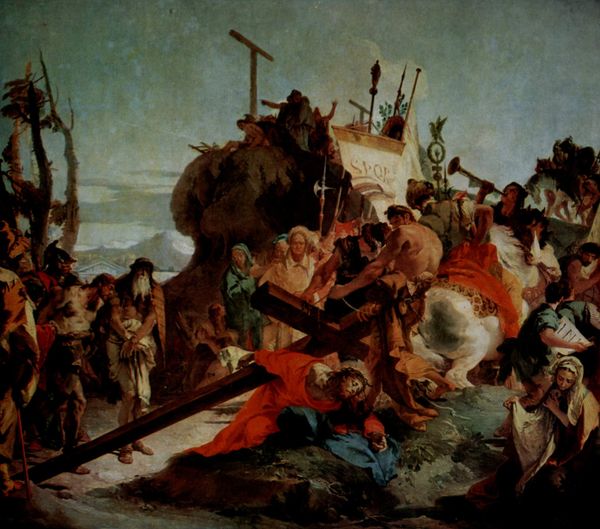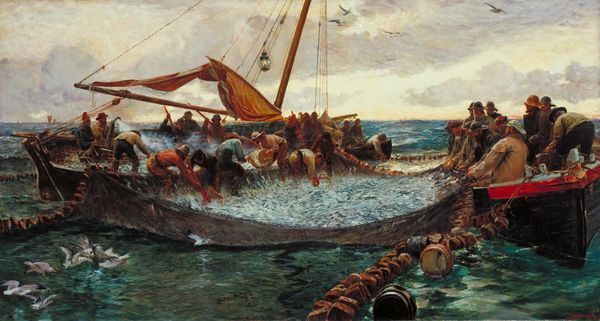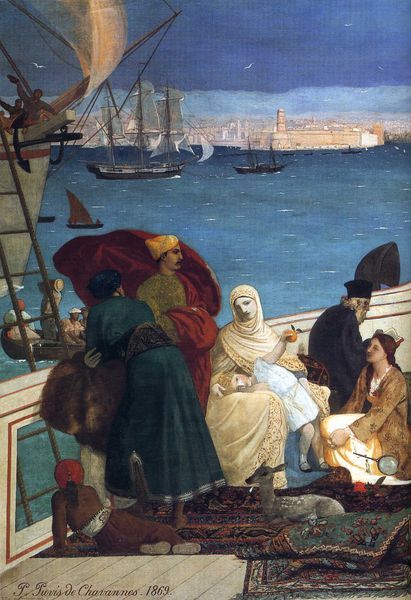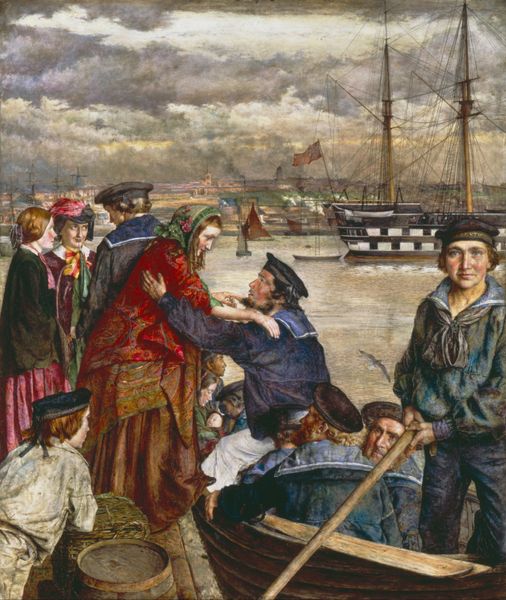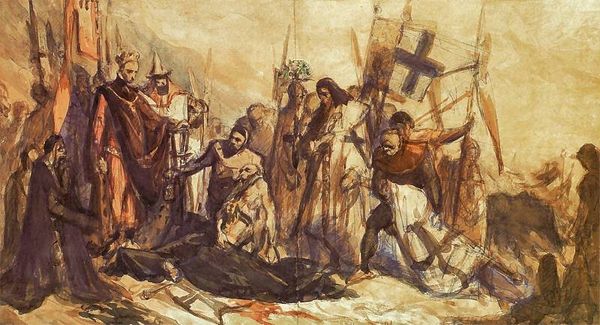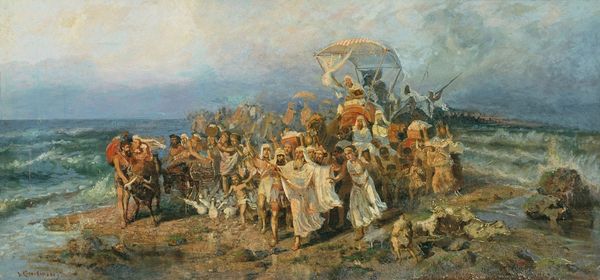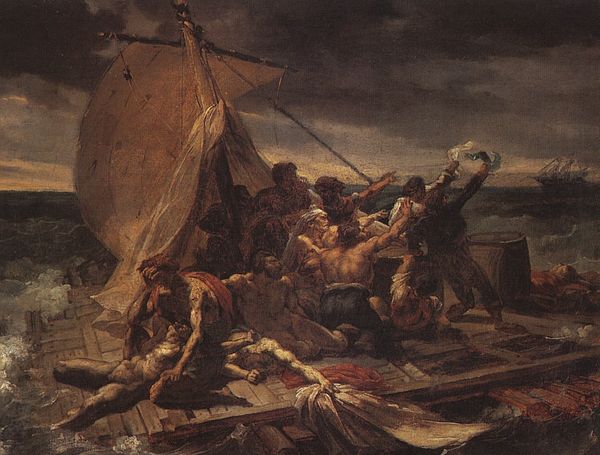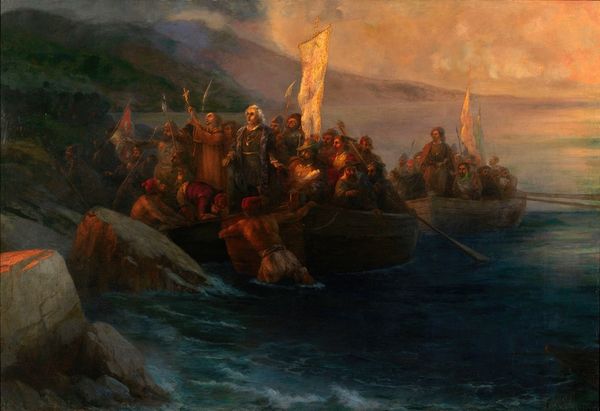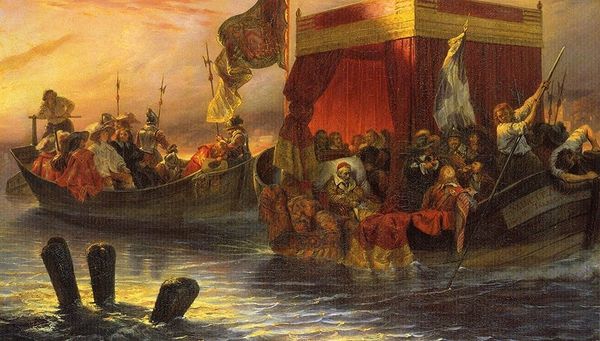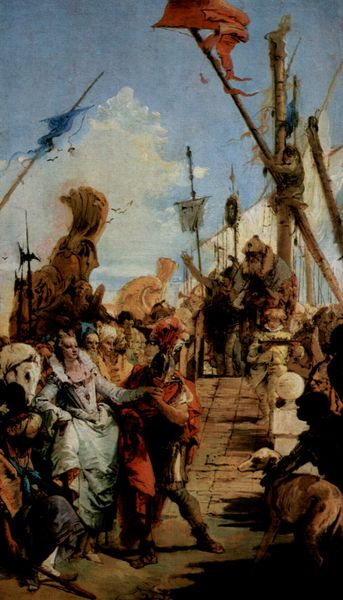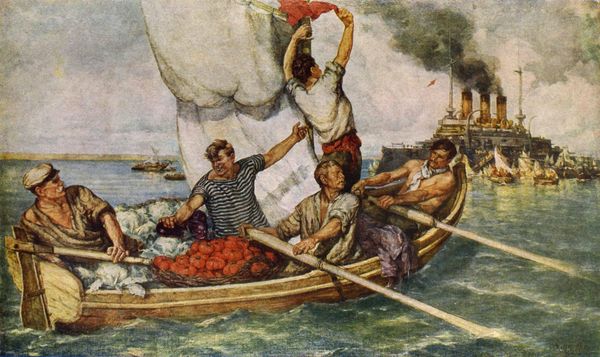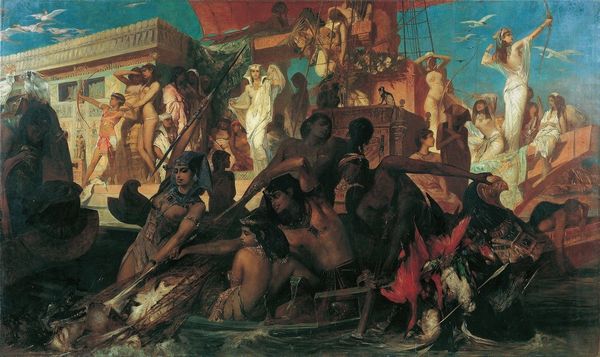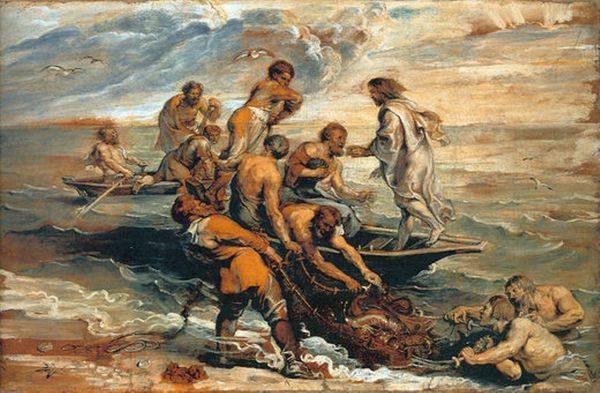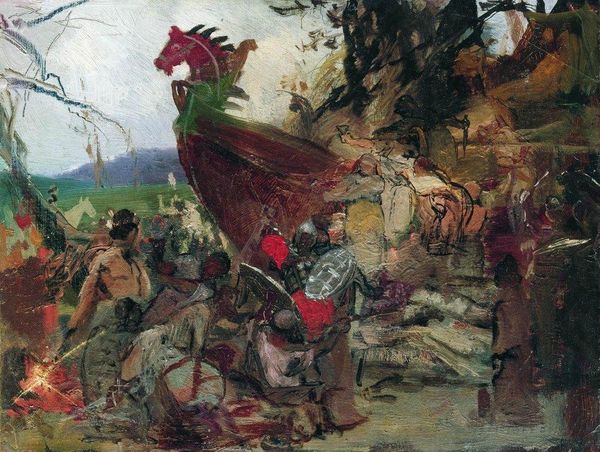
The Rebellious Potemkinites Take the Body of the Murdered Vakulenchuk Ashore 1949
0:00
0:00
oil-paint
#
narrative-art
#
oil-paint
#
landscape
#
soviet-nonconformist-art
#
figuration
#
social-realism
#
oil painting
#
group-portraits
#
history-painting
#
realism
Copyright: Leonid Muchnyk,Fair Use
Editor: This is Leonid Muchnyk's "The Rebellious Potemkinites Take the Body of the Murdered Vakulenchuk Ashore," painted in 1949 using oil paints. It certainly feels dramatic, doesn't it? So much movement and emotion concentrated on this shore... What symbols do you see operating in this image? Curator: Notice how Vakulenchuk is centered, draped with what appears to be a white and blue cloth, drawing obvious parallels to religious iconography. Consider the Pietà, the grieving over a lost son or hero, an instantly recognizable motif meant to stir pathos. Now, think about the collective identity: why is he surrounded by *these* figures specifically? Editor: Well, they seem to be his fellow sailors, judging by their clothing, maybe representing the solidarity of the group... the working class. Curator: Exactly. Their grief fuels revolutionary zeal. Muchnyk employs the sea itself as a potent symbol - a vast, potentially violent force reflecting the unrest simmering within society. Are those storm clouds gathering? Is it dawn or dusk? Ambiguous and filled with the feeling of change. This mirrors Vakulenchuk’s death – a spark igniting a larger uprising, linking individual sacrifice with the inexorable tides of history. He has become a figure in a symbolic ritual, and that is precisely why he is set apart from the scene itself, elevated, if you will, like the Saint who triggers action in an altarpiece. Editor: That's fascinating – the combination of personal mourning with revolutionary energy. Curator: The image becomes less about documenting an event and more about constructing a powerful mythos. It urges us to remember, to interpret, and, perhaps, to question whose narrative is truly being served. It is worth considering what remains consistent across cultures through images, and what makes the specifics here unique to the Soviet experience. Editor: I see that now! I had been stuck on the immediate drama but missed the layers of historical and cultural meaning underneath. Thank you!
Comments
No comments
Be the first to comment and join the conversation on the ultimate creative platform.
